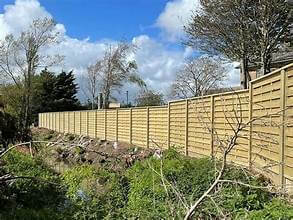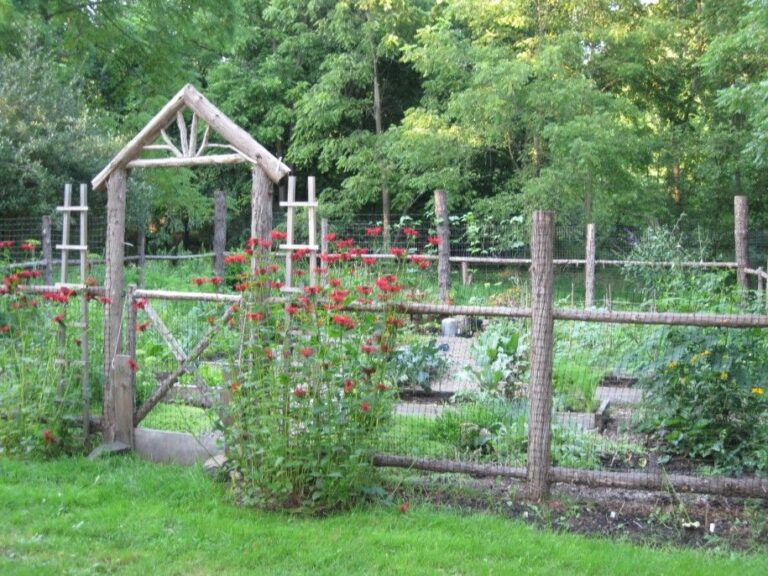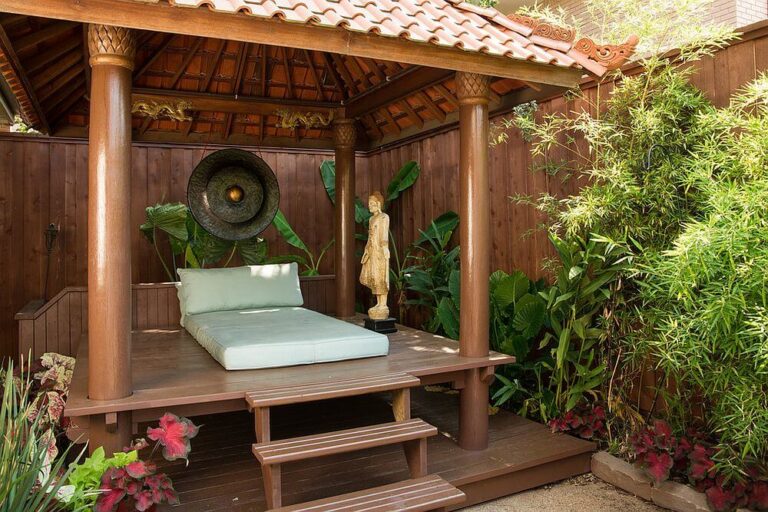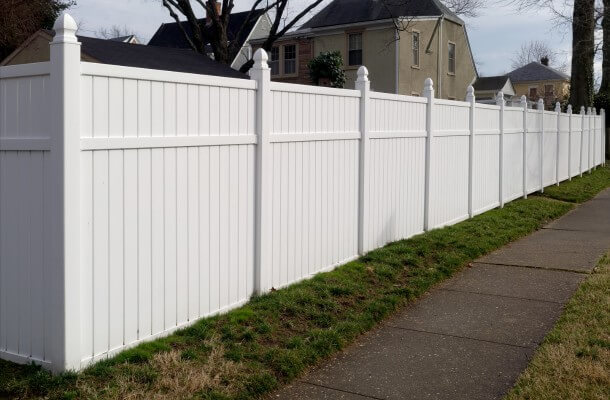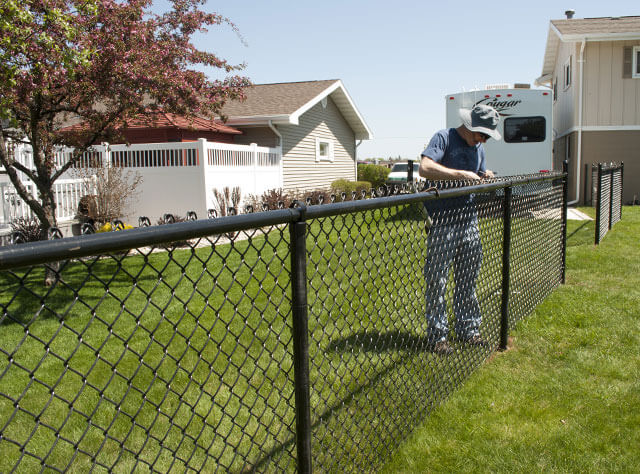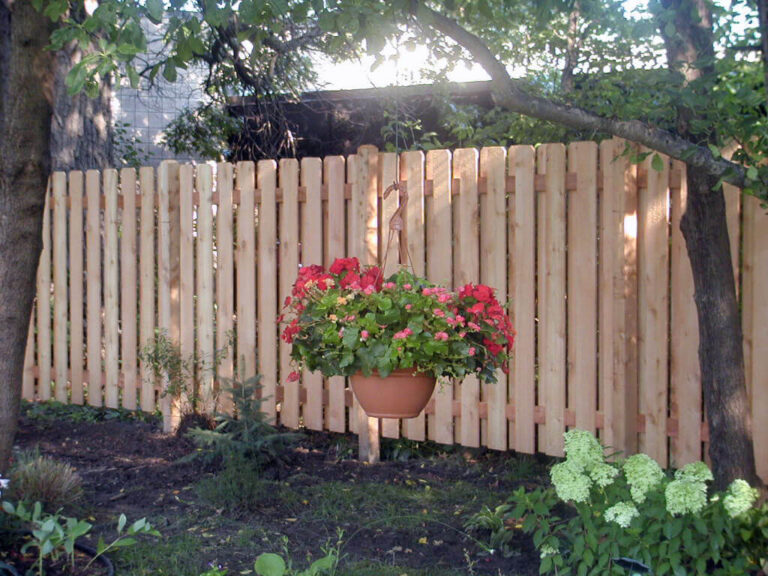When choosing fencing for coastal communities, consider materials that are resistant to corrosion, such as aluminum or vinyl. Additionally, select a fence style that allows for proper airflow to minimize wind resistance and potential damage.
A reputable installer can also provide guidance on suitable options for the coastal environment.
Living in a coastal area presents unique challenges when it comes to selecting the right fencing options.
Harsh saltwater exposure, strong winds, and potential erosion make it essential to choose fencing materials that can withstand these environmental factors.
By considering durable, low-maintenance materials that also complement the coastal aesthetics, homeowners can ensure a long-lasting and visually appealing fencing solution for their coastal properties.
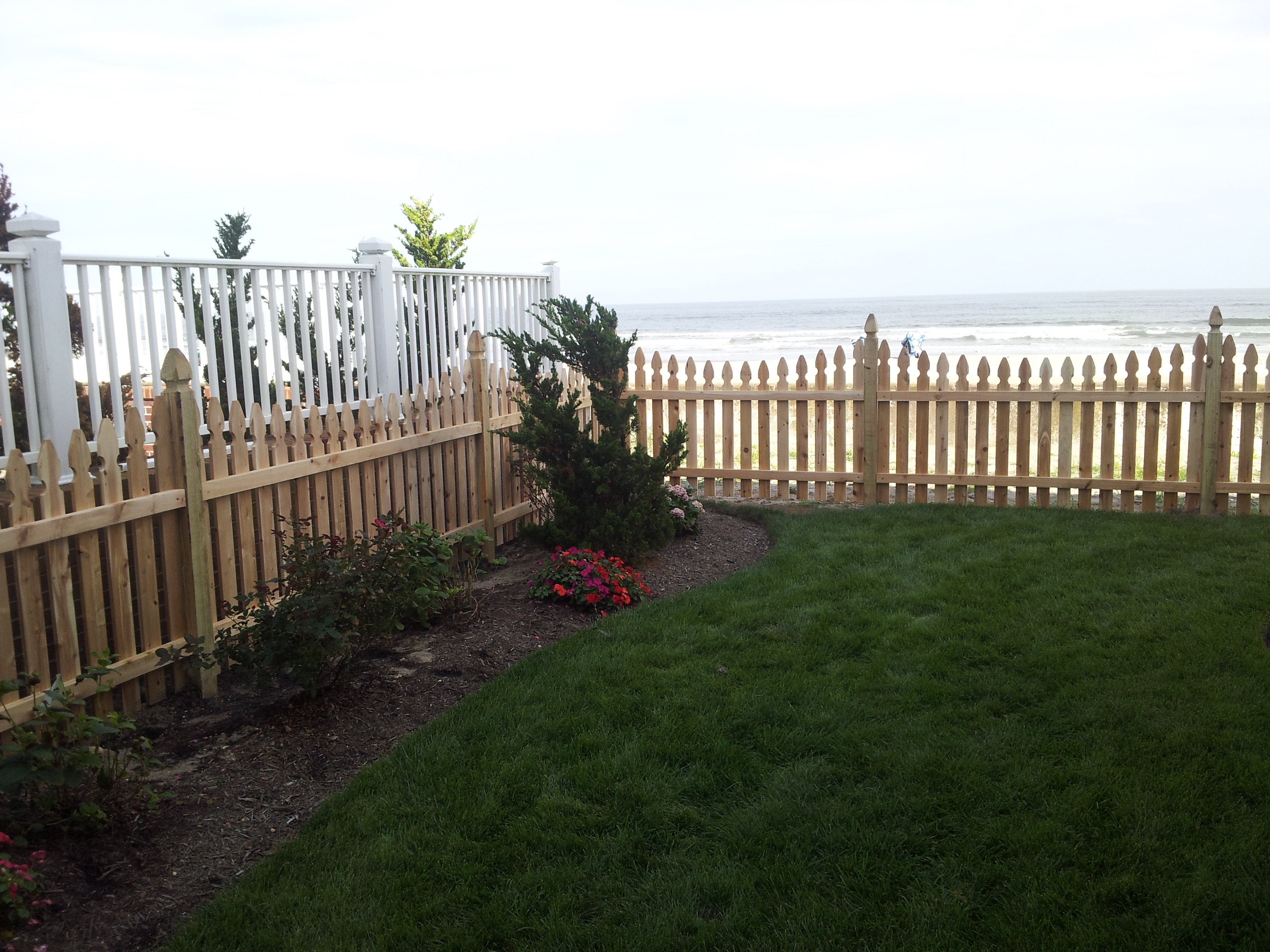
Environmental Considerations
However, selecting the right materials and design is not the only challenge. It’s equally important to find a reliable provider with experience in coastal fencing solutions.
Fencing San Mateo, Fencing Experts, for instance, specialize in designing and installing fences that withstand harsh coastal conditions.
They offer a range of materials, including corrosion-resistant options, and tailor solutions to meet specific environmental challenges.
Consulting with professionals like these can make a significant difference in the longevity and effectiveness of your fencing investment.
Saltwater Exposure
Coastal areas are exposed to high levels of salt from the ocean, which can accelerate corrosion and deterioration of traditional fencing materials.
When choosing fencing for coastal regions, the impact of saltwater exposure must be carefully evaluated.
Wind And Storm Resilience
Coastal communities are prone to strong winds and potential storm events.
Selecting a fencing option with excellent wind resilience and storm resistance is essential for ensuring the longevity and stability of the fence structure in these harsh coastal conditions.
Material Selection
When choosing fencing for coastal communities, selecting the right material is crucial.
The coastal environment exposes fencing to harsh elements such as saltwater, high winds, and constant humidity, making material selection a critical consideration.
Here are the top material options for coastal fencing, each with its own set of advantages and considerations.
Vinyl And Pvc
Vinyl and PVC fencing are popular choices for coastal areas due to their durability and resistance to corrosion from saltwater.
These materials are low-maintenance, providing a long-lasting solution for coastal properties.
They are also available in a variety of styles, colors, and textures, offering homeowners flexibility in design while ensuring high performance.
Aluminum And Steel
Aluminum and steel fencing are known for their strength and ability to withstand coastal conditions.
They are resistant to rust and corrosion, making them ideal for areas with constant exposure to saltwater and harsh weather.
Their sleek and modern appearance adds a contemporary touch to coastal properties, enhancing both security and aesthetic appeal.
Wood And Composite
Wood and composite fencing provide a traditional and natural look to coastal properties.
While wood offers a classic aesthetic, it requires regular maintenance to protect against moisture and salt exposure.
On the other hand, composite materials offer the appeal of wood with increased durability and resistance to the coastal environment, making them a suitable alternative for coastal communities.
Coastal Color Palettes
Choosing the right color palette for your coastal community fence is essential to maintaining the aesthetic appeal of your property while also ensuring the longevity of the fence.
Coastal color palettes typically include neutral shades and accents of blue and green, harmonizing with the natural surroundings of the coast.
Neutral Shades
When it comes to coastal fencing, neutral shades such as whites, beiges, and grays are popular choices.
These colors complement the sandy beaches and natural hues of the coastal environment, creating a timeless and classic look that seamlessly blends with the surroundings.
Blue And Green Accents
Blue and green accents can add a refreshing and vibrant touch to your coastal fence.
Shades of aqua, seafoam, and navy evoke the calming presence of the ocean, while green hues reminiscent of sea glass and coastal flora bring a sense of tranquility and serenity to your outdoor space.
Coastal-specific Design Features
When it comes to choosing fencing in coastal communities, it’s important to consider the unique environmental factors and aesthetic appeal that can enhance the overall look of a coastal property.
Coastal-specific design features play a crucial role in not only adding functionality but also in capturing the nautical charm and ambiance.
Picket And Lattice Styles
Picket and lattice styles are popular choices for coastal fencing.
The open design allows for airflow and offers unobstructed views of the coastal landscape.
The timeless appeal of picket fences adds a classic touch to coastal properties, while lattice styles bring a touch of elegance.
Both options provide a sense of charm while effectively defining the property boundaries.
Nautical-themed Accents And Decor
Integrating nautical-themed accents and decor into the fence design can enhance the coastal aesthetic.
For instance, incorporating elements such as anchor motifs, ship wheels, or rope details can add character to the fence, celebrating the coastal lifestyle.
By infusing these coastal touches, the fence becomes more than a practical barrier; it becomes a part of the overall coastal theme.
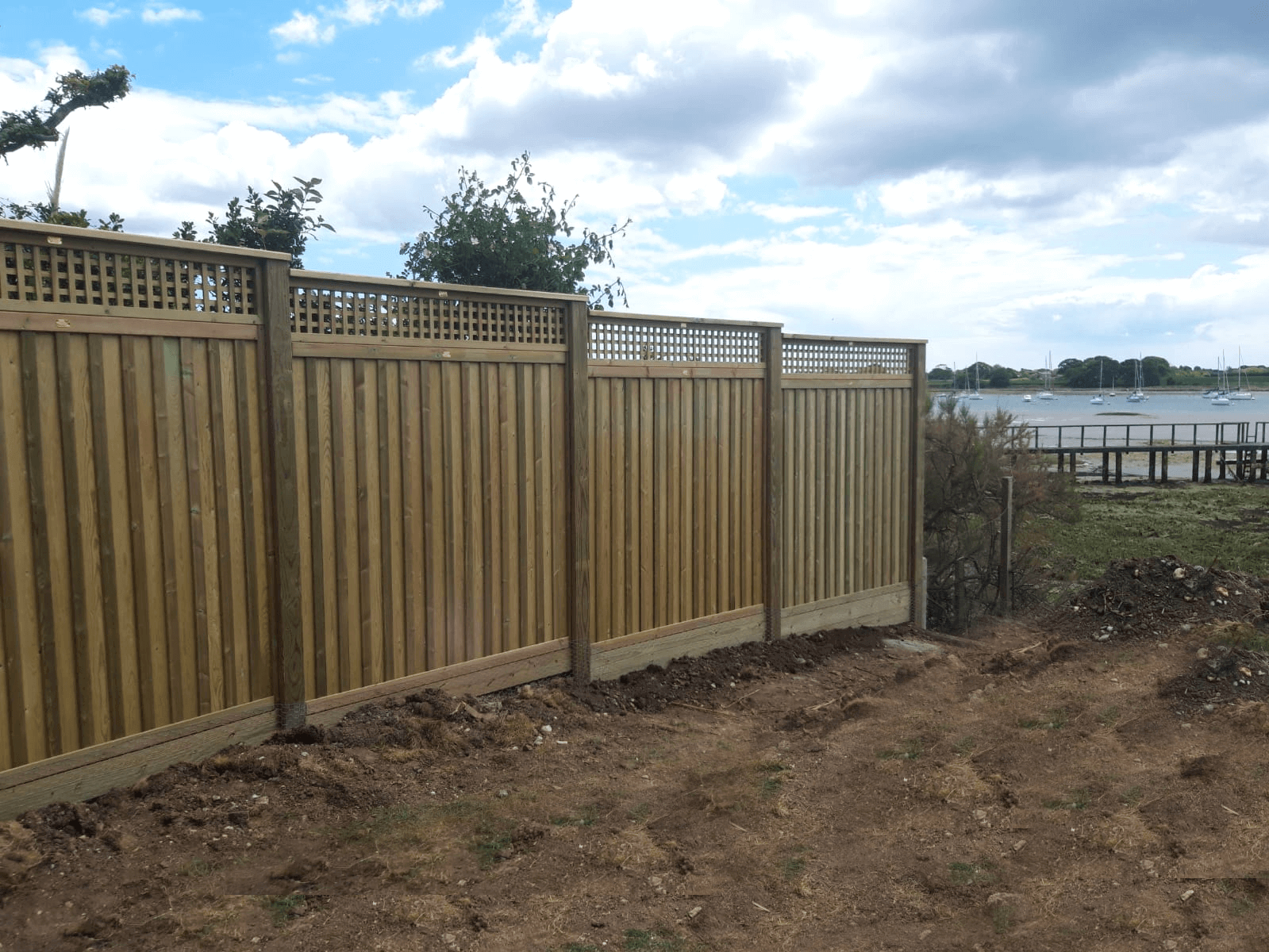
Frequently Asked Questions
What Types Of Fencing Are Suitable For Coastal Areas?
Fencings made from vinyl, aluminum, or stainless steel are ideal for coastal areas due to their resistance to corrosion from sea salt.
How Can I Protect My Coastal Fencing From Saltwater Damage?
Regularly wash the fencing with fresh water and apply a protective coating, such as a specialized sealant, to prevent saltwater damage.
What Are The Best Maintenance Practices For Coastal Fencing?
Inspect the fencing regularly for corrosion, clean it with mild detergent and water, and immediately repair any damages to maintain its longevity.
Conclusion
When choosing fencing for coastal areas, consider durability, resistant materials and professional installation.
Take the time to select the right style that complements your coastal home.
The right fence can enhance your property’s aesthetic while providing protection from the elements.
Research local regulations and enlist the help of experts to make an informed decision. Your perfect coastal fence awaits!

